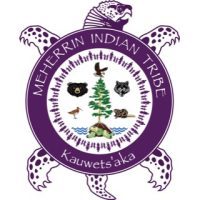
The Meherrin Tribe that settled in northeastern North Carolina in the late 1600s is set to be recognized with a historical highway marker.
The North Carolina Highway Historical Marker dedication ceremony is planned for 1 p.m. Saturday, Oct. 5, at the Meherrin Tribal Grounds between Ahoskie and Murfreesboro.
Supporter Spotlight
The Meherrin, whose traditional name Kauwets’a·ka means “People of the Water,” was formally recognized by the North Carolina government in 1986, the state’s Department of Natural and Cultural Resources announced Monday.
The marker is one of nine being dedicated this year that highlights American Indian culture and history in North Carolina. Historical markers were approved for the Coharie, Haliwa-Saponi, Lumbee, Meherrin, Occaneechi Band of the Saponi, Sappony and Waccamaw Siouan tribes. Historical markers were approved for the East Carolina Indian School and the Buie Mound sites, as well.
The North Carolina American Indian Heritage Commission staff worked closely with tribes in the state to complete the applications to be considered historical marker program, organizers said.
The Meherrin Tribe was first documented by in 1650 English merchant and explorer Sir Edward Bland, who visited the Meherrin village of Cowonchahawkon near present-day Emporia, Virginia. In the years that followed, European settlements began to encroach on native peoples, including the Meherrin, forcing them to move to other parts of Virginia. In 1691, they moved to present-day North Carolina where their tribal territories are found in Hertford, Bertie, Northampton and Gates counties.
A new Pleasant Plains Indian School was built in Hertford County in 1920 to replace the original school built in 1866. It was the second Rosenwald-funded school in the county. The school closed in 1949 and was converted into a community center to serve Indian and mixed families in 1950.
Supporter Spotlight
In 1975, Meherrin descendants reorganized the tribe and reclaimed its identity under Chief Wayne Mackanear Brown. They created a modern tribal government, led by a chief and seven elected council members. The tribe holds an annual powwow during the first week of October on the tribal grounds. A more complete history of the Meherrin Tribe can be found at www.meherrinnation.org.
The Highway Historical Marker Program is a collaboration between North Carolina departments of Natural and Cultural Resources and Transportation. For more information visit the website or call 919-814-6625.







